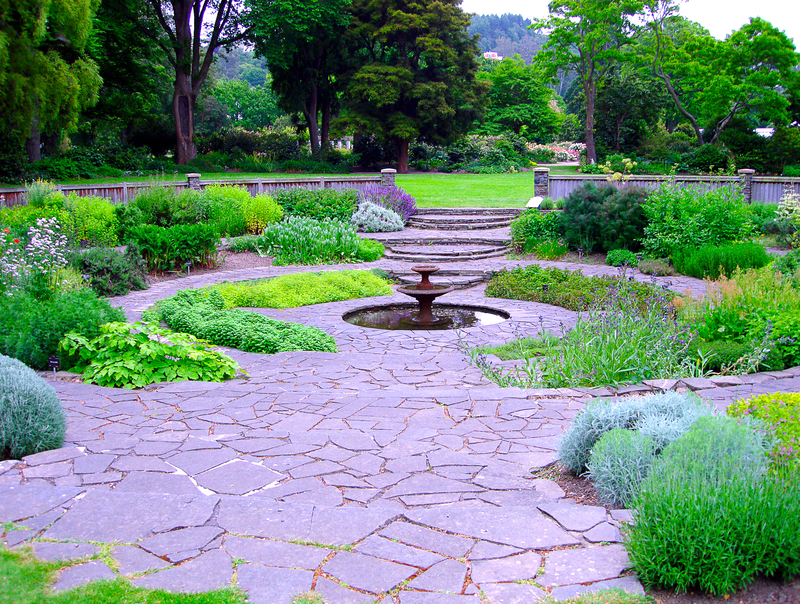The Role of Plants and Gardens in Climate Change Reversal
Posted on 05/06/2025
The Role of Plants and Gardens in Climate Change Reversal
Climate change is one of the most pressing challenges facing humanity. As global temperatures rise and environmental threats escalate, solutions are needed at every scale--from global policy reforms down to changes in our backyards. Plants and gardens play an essential role in climate change mitigation and reversal, offering a wide array of environmental, ecological, and even psychological benefits. This comprehensive article explores the vital connection between plants, gardening, and climate change reversal, empowering individuals and communities to become proactive agents of positive change.

Understanding Climate Change and Its Drivers
To appreciate the impact of plants and gardens on climate change reversal, it's essential to first understand what climate change is and its primary drivers. Climate change refers to long-term shifts in global temperatures and weather patterns, largely caused by human activities that increase concentrations of greenhouse gases such as carbon dioxide (CO2), methane, and nitrous oxide in the atmosphere.
- Burning fossil fuels for transportation, electricity, and industry releases vast amounts of CO2.
- Deforestation reduces the Earth's capacity to absorb excess carbon.
- Industrial agriculture contributes methane and nitrous oxide through livestock and fertilizer use.
Although tackling these global issues requires concerted action, individual and community initiatives such as planting gardens can also make a meaningful difference by leveraging the powerful processes of nature.
How Plants Combat Climate Change
Natural Carbon Sequestration - The Green Solution
At the heart of the role of plants in climate change reversal is the process of carbon sequestration. Through photosynthesis, plants absorb sunlight and extract CO2 from the air, transforming it into oxygen and organic matter. This natural process locks away atmospheric carbon within plants, trees, and soil, removing greenhouse gases and mitigating the greenhouse effect.
- Trees are especially adept at storing carbon for long periods in their trunks and roots.
- Grasslands and prairies sequester carbon in extensive root systems and soil organic matter.
- Gardens of all sizes help by adding biomass and improving soil quality, furthering carbon storage.
The more vegetation we plant and nurture, the more we can help reverse the accumulation of excessive greenhouse gases responsible for global warming.
Cooling Urban Heat Islands
Urban areas are particularly susceptible to climate change impacts due to dense infrastructure, lack of greenery, and heat-retentive surfaces. Urban gardens, green roofs, and street trees help cool city environments by providing shade, reducing energy usage for air conditioning, and filtering pollutants. This temperature regulation is crucial in mitigating the intensifying effects of climate change in our cities.
The Role of Gardens in Climate Change Reversal
Types of Gardens That Make a Difference
- Community gardens create green spaces in cities, absorb CO2, and foster community stewardship.
- Permaculture gardens mimic natural ecosystems, use less water, and increase local biodiversity.
- Pollinator gardens support bees and butterflies, essential allies in promoting robust and resilient ecosystems.
- Vegetable and edible gardens reduce dependence on carbon-intensive food supply chains by encouraging local food production.
The Multifaceted Benefits of Planting Gardens
In addition to sequestering carbon and reducing pollution, the cultivation of gardens designed for climate change reversal offers a range of interconnected benefits:
- Enhances Biodiversity: Encouraging diverse plant species supports insects, birds, and wildlife, strengthening ecosystem resilience.
- Protects Water Resources: Gardens reduce runoff and encourage water infiltration, naturally filtering pollutants from rainwater.
- Improves Soil Health: Organic gardening enriches soil microbiology, vital for carbon storage and plant vitality.
- Promotes Mental and Physical Health: Access to green space is linked to reduced stress, improved mood, and increased physical activity.
Practical Steps: How Individuals and Communities Can Make a Difference
Planting and Maintaining a Climate-Friendly Garden
Anyone can participate in climate change reversal through gardening. Here are steps to maximize your garden's environmental benefits:
- Choose native and climate-adapted plants that require less water, fewer chemicals, and provide habitat for local wildlife.
- Eliminate synthetic chemicals by opting for organic fertilizers and integrated pest management techniques.
- Add trees and shrubs which sequester more carbon and offer longer-term climate benefits.
- Compost organic waste to reduce methane emissions from landfills and enrich garden soil.
- Install rain gardens or bioswales for water management and enhanced biodiversity.
- Create green roofs or living walls in urban settings to expand green space and reduce energy use.
Community Engagement and Advocacy
Climate-conscious gardening is most impactful when carried out collectively. Communities can:
- Transform vacant plots into community gardens.
- Advocate for municipal tree-planting initiatives.
- Encourage schools to develop educational gardens that teach climate science and sustainability.
- Support local nurseries and organic seed exchanges.
Integrating Technology with Green Spaces
Using technology to monitor and improve gardening practices can greatly enhance the positive impact of plants and gardens on climate change reversal:
- Smart irrigation systems reduce water waste.
- Soil sensors help optimize plant health and fertilizer application.
- Mobile apps support species identification and connect gardeners for resource sharing and education.
Innovative Approaches: Urban Greening and Vertical Gardens
With urbanization encroaching on traditional green spaces, cities are turning to innovative methods to integrate plants indoors and outdoors. The rise of vertical gardens, rooftop gardens, and pocket parks is making it possible to bring nature back into built environments--effectively using every available surface to combat climate change.
- Vertical gardens maximize space, reducing urban heat and improving building insulation.
- Green rooftops absorb rainwater, support pollinators, and lower building energy use.
- Edible landscapes provide food, promote sustainable living, and absorb CO2.
Case Studies: Successful Gardens Making a Difference
Singapore - A Garden City's Climate Approach
Singapore's City in a Garden vision demonstrates large-scale urban greening. Lush rooftop gardens, "supertree" structures, and well-planned urban parks absorb carbon, provide biodiversity, lower city temperatures, and exemplify how gardens can be integrated to reverse climate impacts.
New York City - Turning Rooftops Into Ecosystems
New York's Brooklyn Grange boasts one of the world's largest rooftop soil farms. Besides growing vast quantities of organic produce for local markets, the green roof filters rainwater, cools buildings, and supports urban wildlife--demonstrating the powerful intersection of urban gardening and climate mitigation.
African Agroforestry Projects
In Africa, agroforestry projects blend crops with tree planting to rehabilitate degraded land, combat desertification, and improve food security. These projects sequester massive quantities of atmospheric carbon, restore habitats, and provide sustainable livelihoods--further proof of the transformative potential of plants in reversing climate change.
Barriers and Considerations in Greening for Climate Reversal
Despite clear benefits, expanding plant and garden coverage for climate change reversal faces challenges:
- Land availability--especially in urban environments--may limit garden creation.
- Resource constraints such as access to water, quality soil, and native plant materials.
- Maintenance and up-keep are essential for sustaining benefits.
- Community engagement is required to prevent neglect and maximize participation.
Strategic planning, city policy, education, and grassroots involvement are all essential to overcome these obstacles and fully harness the role of plants and gardens in climate change reversal.

Looking Forward: Empowering Change Through Green Action
Whether you're a homeowner, city planner, or educator, your choices regarding gardening and planting trees matter. When scaled up collectively, these actions contribute significantly to climate change reversal strategies. Here's a quick summary of key steps you can take:
- Plant a diversity of trees, shrubs, and perennials adapted to your local climate.
- Support and participate in community garden initiatives.
- Use sustainable, regenerative practices--composting, mulching, and minimizing chemicals.
- Advocate for green infrastructure in community planning and development.
- Educate others about the climate benefits of gardens and plants.
Conclusion: Plants, Gardens, and the Path to Climate Change Reversal
The journey to a sustainable, climate-resilient future runs straight through our gardens and green spaces. By leveraging the natural power of plants to absorb carbon, cool environments, and sustain biodiversity, communities can play a central part in climate change reversal. From planting a single tree, starting a backyard compost, to creating lush city parks, every green initiative counts.
As awareness of the essential role of plants and gardens in fighting climate change continues to grow, so does our collective ability to restore natural balance. Get involved, educate others, and let your garden be a living example of hope, action, and environmental resilience in the age of climate crisis.

